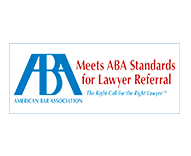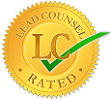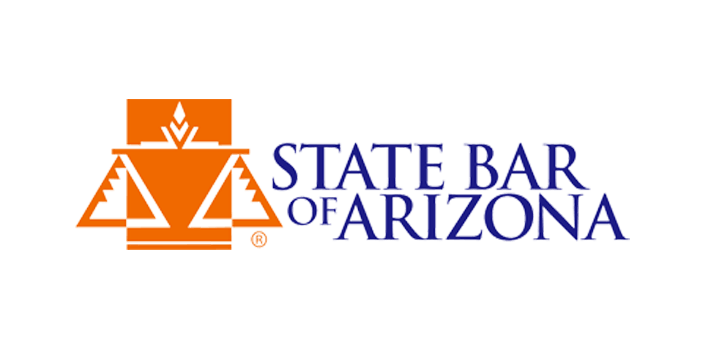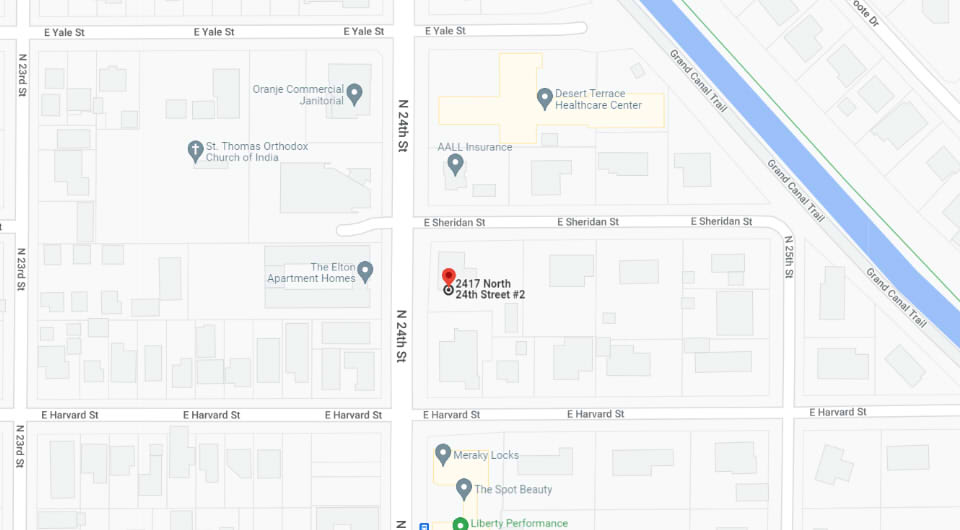A child experiences birth trauma if their organs and/or tissues are damaged at birth. The damage can result in short-term and long-term consequences, including cognitive and physical impairment. If your baby experiences birth trauma, it could result in emotional, physical, and financial difficulties for you and your entire family. Personal injury laws allow you to file for compensation if your child’s trauma was due to medical negligence or malpractice. The payment would help you cater to your child’s medical needs, life care expenses, and other damages. You will likely enjoy a seamless legal process if you work alongside a skilled personal injury attorney.
If you wish to file a birth trauma civil lawsuit in Phoenix, our Phoenix Personal Injury Attorney Law Firm attorneys can help. With our skills and experience in handling similar cases, we can help you obtain the compensation you deserve.
What Constitutes Birth Trauma?
A child is said to have suffered birth trauma or a birth injury if they sustain a physical injury during birth. Birth traumas are uncommon, but babies that suffer injuries at birth suffer physically, emotionally, and cognitively later in life. There are specific situations in which a child will likely suffer a birth injury. For example, a normal delivery would be challenging if the baby was big and the mother’s pelvis was small. In cases like these, doctors should use their skills and necessary equipment, like a vacuum or forceps, to help the mother deliver the child safely. Highly skilled doctors use their hands and skills to deliver such babies.
These delivery methods are very effective and have been used for a long time. But if doctors do not exercise proper care, the child can sustain an injury that can impact their physical and mental abilities in the long term. For example, if the delivering medical personnel exerts more force than necessary or is not careful when using the equipment. Here are some of the situations in which a child is likely to suffer a birth injury:
- If the child is born before their time,
- If the child’s head does not present first during birth,
- If the mother labors for an unusually long period,
- If the mother is excessively overweight,
- If the mother’s birth canal makes it difficult for normal delivery,
- If the child is delivered through c-section.
Some causes of birth injuries can be prevented. For example, doctors can recommend an alternative way of delivering the baby if a normal delivery is risky or impossible. But in some situations, doctors make negligent mistakes that result in birth trauma. For example, if a doctor fails to take proper precautions to make a seemingly tricky birth smooth. Some doctors have been reported to use excessive force when helping mothers deliver. Mistakes like these and negligent acts can result in a civil lawsuit if it is established that the doctor, medical practitioner, or medical facility in which the baby was born failed in their duty of care.
It is difficult for a mother or family to understand exactly what happened or did not happen for their child to sustain a birth injury. That is why you should work closely with an experienced personal injury attorney. Your attorney will study the details of your case to advise you on your options. They will also defend your rights and help you fight for the compensation you deserve.
Common Types of Birth Injuries
Birth injuries differ from one child to another, depending on the cause. Here are the types of injuries you should be aware of:
Brachial Plexus Injuries
These refer to injuries affecting the nerves near a child’s neck. The brachial plexus comprises nerves that allow a person’s arms, shoulders, and hands to move. These nerves could be affected at birth when the doctor struggles to deliver a child’s shoulders since they are the widest part of a child and the most difficult to push/pull out. If the mother cannot naturally push the baby’s shoulder’s out, the doctor can offer to help the shoulder’s out. In the process, they can stretch the brachial plexus nerves to a greater degree, resulting in an Erb’s palsy injury.
Not all children who undergo a difficult normal delivery suffer these kinds of injuries. Those who sustain moderate or minor Erb’s palsy injuries recover fully after treatment and therapy. But some children sustain ruptured or torn nerves that could require surgical treatment. The latter could suffer severe symptoms for the rest of their lives.
Here are the different levels of Erb’s palsy:
- Neurapraxia occurs when the nerves near the child’s shoulders are overstretched but not torn. This condition eventually heals, and the child can recover after a few months. But they could require physical therapy to enable the child to move their shoulder and arm during the healing journey.
- Neuroma occurs when a child’s nerve fibers are overstretched to the extent of becoming damaged. The child develops scar tissue at the injury site. The scar tissue could pressure the healthy nerves, resulting in pain and other complications.
- A rupture can occur if a child’s nerves are completely torn. Completely torn nerves can be repaired through surgical treatment.
- An avulsion can occur if a nerve is torn from the child’s spinal cord. The torn nerve can be repaired through surgical treatment, but it could be difficult for the child’s arm to recover its full functionality.
Facial Paralysis
A child can sustain facial paralysis if their facial nerves experience pressure during birth. It could be because the delivering doctor used more force than necessary when using delivery forceps. If a child’s facial nerves are severed, they could require surgical treatment.
Oxygen Deficiency
Sometimes a child’s oxygen supply could be cut off by their umbilical cord if it was wrapped around the child’s neck or compressed. In that case, the baby’s organs, which need oxygen to function, like the brain, could be damaged. A brain injury from oxygen deprivation is the leading cause of cerebral palsy in most infants. The condition has long-term effects on the child’s muscle control, strength, and mobility.
Bone Fractures
Some babies sustain bone fractures during birth, including fractures of the clavicle or collarbone. Some of these injuries require extensive treatment and care for the child to fully recover fully.
Caput Succedaneum
It is a condition that results from tissue damage when a baby’s head sustains injuries when squeezing through its mother’s birth canal. The injury, which could also result from a vacuum extraction, causes the baby’s scalp to swell. Typically, the damage does not result in long-term complications. The swelling can subside within days.
Bruisings and Marks
A child can develop bruising and marks on its body when the doctor assists its mother in delivering. The marks could result from the use of forceps or during vacuum extraction. These are not long-term injuries, as they eventually heal on their own.
Cephalohematoma
It is a condition that could develop if the area between a child’s skull and the fiber material surrounding it bleeds. The condition causes the child to experience jaundice during the breakdown of the red blood cells. But the jaundice goes away after a few weeks or months.
How a Birth Trauma Can Affect Your Baby
Birth trauma affects all aspects of a child’s life, including physical and cognitive factors. The main concerns are usually the child's short- and sometimes long-term mental and physical defects. Typically, birth traumas profoundly affect a child's growth and development. That is due to the stress and other factors surrounding the trauma the child suffered at birth. For example, if the child suffered an injury that resulted in a disability, they will likely suffer bullying and have self-esteem issues later on in life.
Birth trauma can impact a child's entire life if it has lingering symptoms or physical effects the child will experience for life. Some of these traumas will affect the child’s mental and physical health and social skills. Here are some of the issues a child could suffer due to birth trauma:
- Anger and excessive aggression.
- Anxiety.
- Insecurity.
- Separation anxiety.
- General nervousness.
- Eating difficulties, resulting in severe weight loss.
Some birth traumas also result in permanent disabilities in a child’s body and mind. These disabilities vary in severity, depending on the child's trauma at birth. Even though some of these injuries are permanent, a child’s quality of life can be improved with early intervention.
Liability in Birth Trauma Cases
Some birth injuries occur independently, for example, in cases of pre-existing medical conditions. But in other cases, they occur due to medical negligence. Medical negligence is the leading cause of nerve injuries associated with some of the most severe birth trauma cases, including cerebral palsy and Erb’s palsy. Personal injury laws allow you to file for compensation if your baby’s birth injury was due to negligence or medical malpractice. Thus, you must establish liability to build a solid case against the negligent party.
In most cases, traumatic births happen when medical staff do not take adequate care when delivering babies to protect the child from injuries. Sometimes, the medical staff or the delivering doctor is responsible for the child’s damages. Here are some of the ways the doctor or medical staff can be responsible for the birth trauma experienced by your child:
- If they fail to position the baby well for safe delivery,
- If they allow a mother to deliver a child that is too heavy or big,
- Failing to conduct a c-section delivery when it is necessary.
- Failing to take precautions when the child’s umbilical cord is wrapping around its neck.
- Negligently administering medications to the mother before delivery.
- Failing to notice warning signs of a difficult delivery during prenatal examinations.
- Allowing the mother to undergo labor for far too long.
If the medical staff failed in its actions or omissions and the result was birth trauma, you can hold them accountable for the resulting damages.
Here are other direct causes of birth injuries for which doctors or medical staff can be held responsible:
- Failing to exercise caution when using vacuum extractions, forceps, and other tools when delivering a baby.
- Using more force than necessary to pull a baby whose head or shoulders are stuck during birth.
- Lack of testing or conducting inadequate tests during prenatal examinations.
- Negligently administering labor-inducing anesthesia or drugs.
- Failing to diagnose conditions that could result in birth trauma, like infections, placenta abruption, and premature membrane rupture.
- Failing to refer severe cases to medical specialists.
- Inadequate health monitoring of the mother and fetus before and during labor.
- Inadequate or unsanitary labor and delivery conditions.
If your child has suffered birth trauma and you want to seek compensation from the negligent party, your first action should be establishing liability. First, you must determine your child's exact injury and cause. Then, you must decide if the damage was preventable and how the medical staff who delivered your child could have contributed to it. A skilled personal injury attorney can help you gather the necessary evidence, including the testimony of a medical specialist, to make your case solid enough.
If you have medical documents proving that your child suffered birth trauma and have backing evidence showing that someone’s negligence was the cause of that trauma, you can prepare and file a civil lawsuit against the negligent party in civil court.
Note: If the medical staff responsible for delivering your child was negligent in their acts or omissions, you could file a lawsuit against their employer. The employer (the healthcare facility) can be responsible for the negligent actions of its employees.
Additionally, multiple parties could be responsible for your child’s injury. In that case, you can file separate lawsuits against the responsible parties or their employer (the medical facility they work for). Your competent personal injury attorney will discuss your options and help you file a winning lawsuit.
Compensatory Damages in Birth Trauma Cases
Your attorney will also help you determine the damages you have incurred due to your child’s injury. You must include these damages in your civil claim, complete with supporting documents to verify how you incurred them. Compensatory damages in cases like these are divided into two main categories:
Economic Damages
These are damages for which you incur a direct financial loss. They include the following:
1. Medical Costs
Your child’s medical costs could be overwhelming for you and our family. That is why you deserve compensation for every penny spent on treatment and what you hope to pay. The medical costs you include in the claim must be directly related to your child's birth trauma. You can have the cost of medical treatment, hospital admissions, transport to and from the hospital, doctors’ appointments, and over-the-counter medical expenses.
You will also include the costs of physical therapy and other expenses associated with your child’s need to be examined or treated by a medical specialist.
Attach the doctor’s report to the claim to show how much more treatment your child needs to fully recover from the trauma. You must also include evidence of your payments regarding your child’s injury.
2. Lost Wages
If you or someone else in your family has had to take a break from work to care for the child, you must include their lost wages in the claim. Lost wages are calculated according to how much money you earn daily and how many days you miss work to care for the ailing child.
Non-Economic Damages
Even though these damages do not involve a direct financial loss, they are crucial and must be included in a personal injury claim. They have the following:
- Your child’s suffering and pain.
- The family’s mental anguish.
Wrongful Death
If the injured child lost their life due to birth trauma, you would file a wrongful death claim against the responsible party. A skilled personal injury attorney will help you file a successful claim to help you recover all the damages you have incurred from your child’s death. The compensation you receive can help you in the following ways:
- To pay for the child’s funeral and burial expenses.
- To pay for any pending medical bills.
- To compensate the family for its suffering, pain, stress, and mental anguish.
- To help the mother and any other affected family member pay for counseling and therapy.
Find a Medical Malpractice Personal Injury Attorney Near Me
Has your loved one suffered a birth trauma in Phoenix, and would you like help pursuing compensation for your damages?
Personal injury cases regarding birth trauma can be complicated to pursue. But you can navigate the legal system easily with the right legal help.
Our competent attorneys at the Phoenix Personal Injury Attorney Law Firm can offer you the help and support you need to fight for the compensation you deserve. We will help you find out the injury your child suffered, its cause, and the responsible party. We will also help you prepare and file a successful claim in civil court. We can smooth the complex legal process for you, protect your rights, and fight until you obtain a favorable outcome for your case. Call us at 602-641-9589 and let us discuss your case and our services.










